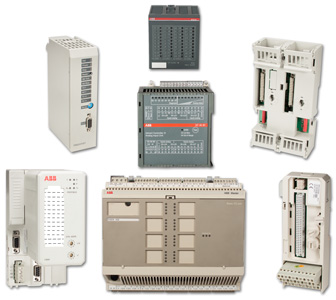Unlock the Secrets of Allen Bradley 1756 Series: What You Need to Know!
The Allen Bradley 1756 series parts is a cornerstone of modern automation and control systems, providing robust solutions for various industrial applications. As industries evolve, the demand for reliable, efficient, and scalable automation systems has never been greater. The 1756 series stands out due to its modular design, which allows for customization to meet specific operational needs. In this article, we will delve into the essential parts of the Allen Bradley 1756 series, exploring their uses and specifications to help you understand how these components can enhance your automation projects.

Overview of Allen Bradley 1756 Series
The Allen Bradley 1756 series has a rich history dating back to its introduction in the late 1990s. As part of the ControlLogix platform, the 1756 series was developed to provide a more integrated approach to industrial automation. Unlike its predecessors, this series offers a flexible architecture that integrates control, safety, and motion capabilities into a single platform. Its role in industrial automation is pivotal, enabling industries to streamline operations, increase productivity, and enhance safety measures. The series has since evolved, incorporating advanced technologies to meet the growing demands of the automation sector, making it a preferred choice among engineers and technicians alike.
Key Components of the 1756 Series Parts
The Allen Bradley 1756 series comprises several key components, each playing a crucial role in the functioning of the system. These include controllers, input/output (I/O) modules, and power supplies, all designed to work seamlessly together. Controllers manage the overall operation, processing data and executing control commands. I/O modules facilitate communication between the controller and field devices, while power supplies ensure that all components receive the necessary power to operate effectively. Understanding these components is essential for anyone looking to implement or maintain a ControlLogix system.
Controllers
The 1756 series features a range of controllers, including the 1756-L71, 1756-L72, and 1756-L73, each designed to cater to different application requirements. These controllers are equipped with advanced processing capabilities, allowing for complex calculations and high-speed data processing. They are ideal for various applications, from simple machine control to complex process automation. A friend of mine, who works in a manufacturing plant, often mentions how the flexibility of these controllers has allowed them to adapt to changing production needs without significant downtime.
I/O Modules
The I/O modules in the 1756 series come in various types, including digital, analog, and specialty modules. Each type serves specific functions, such as monitoring sensors or controlling actuators. For instance, digital I/O modules are used in applications where on/off signals are sufficient, while analog modules are essential for processes requiring continuous variable signals. In a recent project, my friend utilized analog I/O modules to enable precise control in a temperature-sensitive manufacturing process, showcasing their effectiveness in real-world scenarios.
Power Supplies
The power supply units within the 1756 series are designed to ensure reliable operation of all components. These units offer various output voltages and are built to withstand industrial environments, providing stable power under varying load conditions. Understanding the specifications of these power supplies is crucial, as they directly impact the performance and reliability of the entire automation system. A well-chosen power supply can significantly reduce the risk of system failures, which is an experience shared by many in the field.
Specifications and Performance Characteristics
The technical specifications of the 1756 series parts are extensive, catering to a wide range of operational needs. The series supports various communication protocols, ensuring compatibility with other devices in the automation ecosystem. Performance metrics such as processing speed, memory capacity, and input/output channel counts are critical when selecting components for specific applications. Operational limits, including temperature ranges and environmental conditions, must also be considered to ensure the longevity and reliability of the system. My experience with configuring these specifications for a project proved invaluable, as it allowed for optimal system performance and minimized downtime.
Applications of Allen Bradley 1756 Series Parts
The versatility of the Allen Bradley 1756 series parts makes them suitable for various industries, including manufacturing, oil and gas, and food processing. In manufacturing, the series is commonly used for controlling machinery and production lines, enhancing efficiency and reducing human error. In the oil and gas sector, the reliability of these components ensures safe operations in hazardous environments. Real-world applications further highlight the benefits of the 1756 series, with many companies reporting improved productivity and reduced operational costs, thanks to the advanced features and capabilities of these parts.
Importance of Understanding Allen Bradley 1756 Series Parts
In summary, understanding the Allen Bradley 1756 series parts is crucial for anyone involved in industrial automation. From controllers and I/O modules to power supplies, each component plays a vital role in ensuring the system's effectiveness and reliability. As industries continue to evolve, the significance of these components in optimizing automation solutions cannot be overstated. By leveraging the capabilities of the 1756 series, businesses can achieve greater efficiency, enhanced safety, and improved performance in their operations.







commentaires